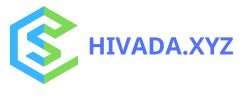Reducing insurance loss ratios with data science and AI algorithms



Insurance coverage protection performs a pivotal operate in providing financial security in opposition to surprising risks and losses. A essential metric for evaluating the financial effectivity and effectively being of insurance coverage protection corporations is the loss ratio, which measures the ratio of claims paid out to premiums earned. Extreme loss ratios can threaten the profitability and sustainability of insurers. Recently, data science and artificial intelligence (AI) have emerged as extremely efficient devices to help insurance coverage protection corporations deal with and reduce their loss ratios efficiently. This textual content explores how these utilized sciences are being utilized all through quite a few parts of the insurance coverage protection commerce.
Understanding loss ratios in insurance coverage protection
The loss ratio is a key indicator of an insurance coverage protection agency’s profitability. It is calculated as follows:


A extreme loss ratio signifies {that a} large proportion of premium income is being paid out in claims, which is perhaps detrimental to the insurer’s financial stability. Traditionally, insurers have used actuarial analysis and historic data to deal with loss ratios, nonetheless these methods often lack the predictive vitality and agility required to reply rising risks efficiently.
Predictive modeling for risk analysis
Predictive modeling leverages statistical algorithms to forecast future outcomes based mostly totally on historic data . Throughout the insurance coverage protection sector, predictive fashions can enhance risk analysis by analyzing fairly a couple of parts, just like demographic data, historic claims data, and even social and monetary indicators.
Various methods, just like logistic regressionare employed to predict the prospect of a declare arising from explicit variables. Selection timber provide a visual illustration of decision pointers and their potential penalties, making it easier for insurers to know the prospect panorama. Moreover, ensemble methods like random forests and gradient boosting combine plenty of decision timber to reinforce prediction accuracy , enabling insurers to guage risk additional efficiently and make educated pricing alternatives
Case Look at: A excellent insurance coverage protection agency carried out a gradient boosting model to find out high-risk policyholders. By incorporating varied data sources, along with social media train and credit score rating scores, the company was ready to tailor premiums additional exactly, resulting in an enormous low cost in loss ratios .
Fraud detection
Fraud detection is essential for mitigating the financial have an effect on of fraudulent claims, which could significantly inflate loss ratios. Insurers often use machine learning algorithms to find out patterns and anomalies inside claims data. Methods just like anomaly detection are employed to determine deviations from common habits that may level out fraudulent train. Clustering methods group associated claims collectively, allowing insurers to find out outliers additional merely. Superior approaches, along with neural networksmight be taught intricate patterns in data, enabling insurers to detect delicate indicators of fraud and take preventive actions sooner than claims are paid.
Case Look at: An insurance coverage protection company employed anomaly detection algorithms to scrutinize claims data. This technique allowed them to find out and look at most likely fraudulent claims early, reducing payouts and reducing their whole loss ratio .
Telematics and usage-based insurance coverage protection
Telematics entails the utilization of devices put in in autos to collect data on driving habits, just like tempo, braking patterns, mileage, and time of day. Utilization-Based Insurance coverage protection (UBI) leverages this data to produce premiums based mostly totally on exact utilization and driving habits, promoting safer driving and reducing the prospect of claims. Some current implementations of telematics run on an insured’s wise phone and do not require a bodily connection to the automotive.
This data permits insurers to conduct a additional actual risk analysistailoring premiums based mostly totally on exact utilization and galvanizing safer driving habits. By adjusting premiums in accordance with explicit individual driving habits, UBI rewards safe drivers with lower costs, lastly contributing to diminished claims frequency and reduce loss ratios.
Case Look at: A major auto insurer launched a UBI program that utilized telematics data to produce personalized premiums. The initiative not solely attracted safer drivers however moreover incentivized policyholders to undertake safer driving habits, and led to a decrease in claims frequency, significantly reducing their loss ratio .
Pure Language Processing for claims processing
Pure Language Processing (NLP) enhances claims processing effectivity by automating the extraction of valuable data from unstructured textual content material data, just like accident experiences and purchaser statements. Textual content material mining strategies enable insurers to sift by the use of big volumes of documentation quickly, whereas sentiment analysis helps gauge purchaser satisfaction and detect potential factors early throughout the claims course of. This automation accelerates the claims coping with time and reduces the chances of human error, leading to quicker settlements and whole operational worth monetary financial savings.
Huge language fashions (LLMs) are a subset of NLP that allow prospects to converse with a smart-AI system in textual content material. Insurers can use these system to produce wise chat-bots that help prospects submit claims or reply explicit questions. Furthermore, insurers can assemble interior LLMs that consumption proprietary paperwork all through a course of known as teaching. These interior LLMs can then be used to help brokers, underwriters, and help staff query the LLM to ask questions on superior pointers and interior insurance coverage insurance policies.
Case Look at: Insurers use NLP to automate the preliminary analysis of claims by extracting key data from accident experiences and purchaser statements. This accelerates the claims course of and reduces the prospect of errors, leading to faster settlements and reduce operational costs .
Purchaser segmentation and personalization
Purchaser segmentation is essential in modern insurance coverage protection practices, the place insurers leverage clustering algorithms to divide prospects into groups based mostly totally on shared traits. This segmentation permits for tailored risk administration strategies and customised pricing approaches. Clustering algorithms group prospects based mostly totally on habits, demographics, and claims historic previous. By determining low-risk prospects and offering them personalised insurance coverage protection merchandise, insurers can attraction to additional fascinating policyholders, which lastly contributes to a reduction in whole loss ratios.
Case Look at: An insurer used clustering algorithms to part their purchaser base. By offering personalized reductions and safety decisions to low-risk prospects, they attracted additional fascinating policyholders and diminished their whole loss ratio .
A warning on regulation and the utilization of personally identifiable data
Utilizing data and AI can lower loss ratios, nonetheless aren’t with out their very personal distinctive set of potential factors. Tech-driven insurance coverage protection corporations face risks in balancing innovation with ethical points and regulatory compliance in an evolving digital panorama.
One insurance coverage protection agency, recognized for its progressive technique to insurance coverage protection, utilized video analysis as a part of its claims course of to expedite and enhance the accuracy of claims assessments . By integrating know-how, the company allowed policyholders to submit films of incidents, just like property hurt or accidents, which can then be analyzed using AI algorithms . This system not solely accelerates the claims course of however moreover helps in minimizing fraudulent claims. The incorporation of video proof allowed the company to streamline operations, making the insurance coverage protection experience additional surroundings pleasant and user-friendly.
Nonetheless, this agency confronted criticism and licensed scrutiny over its use of video analysis in claims processing. Points arose regarding privateness and consent, as many shoppers felt uneasy about how their video submissions had been getting used and saved . In some conditions, prospects had been reportedly unaware that their films might be analyzed for patterns or traits, elevating ethical questions on data utilization and shopper transparency . These points culminated in complaints and allegations that the company’s practices may violate privateness authorized pointers , leading to investigations, courtroom docket circumstances , and discussions regarding the need for stricter guidelines.
Conclusion
Data science and AI are revolutionizing the insurance coverage protection commerce, providing extremely efficient devices to cut back loss ratios and improve profitability. By leveraging predictive modeling, fraud detection, telematics, NLP, and purchaser segmentation, insurers can additional exactly assess risk, streamline operations, and enhance purchaser satisfaction. The best way ahead for insurance coverage protection lies throughout the continued integration of these superior utilized sciences, promising even increased efficiencies and value monetary financial savings.





